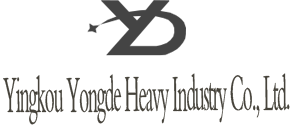Reactor
The configuration, design conditions, process, inspection and manufacturing, and acceptance must be based on relevant technical standards to achieve the heating, evaporation, cooling and low-speed mixing reaction functions required by the process. Pressure vessels must follow the standard of GB150 {steel pressure vessel}, and atmospheric pressure vessels must follow the standard of NB/T47003.1-2009 {steel welded atmospheric pressure vessel}. Subsequently, the pressure requirements in the reaction process have different requirements for the vessel design. The production must be processed, tested and tested in strict accordance with the corresponding standards. Stainless steel reactors are different according to different production processes and operating conditions. The design structure and parameters of the reactor are different, that is, the structure of the reactor is different, and it belongs to non-standard container equipment.
The reaction vessel is a comprehensive reaction vessel. The structure, function and configuration accessories of the reaction vessel are designed according to the reaction conditions. From the beginning of the feed-reaction-discharge, the pre-set reaction steps can be completed with a high degree of automation, and the temperature, pressure, mechanical control (stirring, blast, etc.), reactants/products during the reaction process Important parameters such as concentration are strictly regulated. Its structure is generally composed of a kettle body, a transmission device, a stirring device, a heating device, a cooling device, and a sealing device. Corresponding auxiliary equipment: fractionation column, condenser, water separator, collection tank, filter, etc.
The materials of the reactor generally include carbon-manganese steel, stainless steel, zirconium, nickel-based (Hastelloy, Monel) alloy and other composite materials. The reactor can be made of SUS304, SUS316L and other stainless steel materials. The agitator has anchor type, frame type, paddle type, turbine type, scraper type, combined type. The rotating mechanism can adopt cycloidal pinwheel reducer, stepless speed reducer or frequency conversion speed control, etc., which can meet the special requirements of various materials. Response requirements. The sealing device can adopt sealing structures such as mechanical seals and packing seals. Heating and cooling can use jackets, half pipes, coils, Miller plates and other structures. Heating methods include steam, electric heating, and heat transfer oil to meet different working environments such as acid resistance, high temperature resistance, abrasion resistance, and corrosion resistance. Process needs. And it can be designed and manufactured according to the user's process requirements.
Classificationedit
1. According to the heating/cooling method, it can be divided into electric heating, hot water heating, heat-conducting oil circulation heating, far infrared heating, outer (inner) coil heating, etc., jacket cooling and kettle inner coil cooling, etc. The choice of heating method is mainly related to the heating/cooling temperature required for the chemical reaction and the amount of heat required.
2. According to the material of the kettle body, it can be divided into carbon steel reactor, stainless steel reactor, glass-lined reactor (enamel reactor), and steel-lined reactor.
2.1. Carbon steel reactor
Scope of application: the environment without corrosive liquids, such as certain oil processing.
2.2. Stainless steel reactor (KCFD series high pressure reactor)
Stainless steel reactor
1. Heating structure type
Electric heating type, jacket type, outer half tube type, inner coil type, the volume is 0.01m3~45m3
2. Material
Carbon steel, stainless steel, high temperature resistant stainless steel, strong acid and alkali resistant stainless steel, enamel or PP materials, etc.
3. Stirring type
Inclined paddle type, anchor type, frame type, push type and single (double) spiral type, and other types of paddle blades can be designed and manufactured according to customer requirements[1].
Scope of application: suitable for high temperature and high pressure chemical reaction tests in petroleum, chemical, pharmaceutical, metallurgy, scientific research, colleges and universities, etc., to complete hydrolysis, neutralization, crystallization, distillation, evaporation, storage, hydrogenation, and alkylation Processes such as polymerization, condensation, heating mixing, constant temperature reaction, etc., can achieve high stirring effects for both viscous and granular materials.
2.3. Glass-lined reactor
Applicable scope: widely used in petroleum, chemical, food, medicine, pesticide, scientific research and other industries.
2.4. Steel lined PE reactor
Scope of application: suitable for acids, bases, salts and most alcohols. It is suitable for the extraction of liquid foods and medicines. It is an ideal replacement for rubber lining, FRP, stainless steel, titanium steel, enamel, and plastic welded plates.
2.5, steel lining ETFE reactor
Scope of application: excellent anti-corrosion performance, resistant to various concentrations of acids, alkalis, salts, strong oxidants, organic compounds and all other highly corrosive chemical media.
3. According to the internal pressure at work, it can be divided into normal pressure reactor, positive pressure reactor, and sub-pressure reactor.
4. According to the stirring form, it can be divided into paddle type, anchor paddle type, frame type, spiral belt type, turbine type, dispersed disc type, combined type, etc.
5. According to the heat transfer structure, it can be divided into jacket type, outer half tube type, inner coil type and combined type.
Structure editing
The reaction kettle is composed of a kettle body, a kettle cover, a jacket, a stirrer, a transmission device, a shaft sealing device, and a support. When the height and diameter of the stirring device are relatively large, multi-layer stirring blades can be used, or it can be arbitrarily selected according to user requirements. A jacket is arranged outside the wall of the kettle, or a heat exchange surface is arranged in the vessel, and heat exchange can also be carried out through an external circulation. The supporting seat has a supporting type or an ear type supporting seat and so on. A gear reducer should be used if the speed exceeds 160 rpm. The number of holes, specifications or other requirements can be designed and manufactured according to user requirements.
1. Packing is usually used under normal pressure or low pressure conditions, and the pressure is generally less than 2 kg.
2. In general medium pressure or vacuum conditions, mechanical seals are used, and the general pressure is negative pressure or 4 kg.
3. Magnetic sealing will be used under high pressure or medium volatility. Generally, the pressure exceeds 14 kg. Except for the magnetic seals that use water to cool down, other sealing forms will increase the cooling water jacket above 120 degrees.
Use noteedit
The reactor is a kind of reaction equipment, and you must pay attention to it during operation, otherwise it will be damaged due to many reasons and cause the production to be forced to stop. Many aspects should be paid attention to in the operation of the reactor.
First of all, the reactor must be operated strictly in accordance with the rules and regulations.
Secondly, before operation, you should carefully check for abnormalities. During normal operation, do not open the upper cover and touch the wiring terminals on the board to avoid electric shock; it is strictly prohibited to operate under pressure; carefully observe the pressure during the pressure test with nitrogen. When the change of the meter reaches the test pressure, immediately close the nitrogen valve switch; the heating speed should not be too fast, and the pressurization should be carried out slowly, especially the stirring speed, which only allows a slow rise.
Finally, when the kettle body is heated to a higher temperature, do not touch the kettle body to avoid burns; the temperature should be lowered first after the experiment. No quick cooling is allowed to prevent damage caused by excessive temperature difference and pressure. At the same time, unplug the power supply in time.
At the same time, the reactor should be maintained after use, so that the autoclave can have a better service life.
Installation and operation specifications
1. The autoclave should be placed indoors. When multiple autoclaves are equipped, they should be placed separately. Each operation room should have an outlet directly leading to the outdoors or passages, and the equipment location should be well ventilated.
2. When installing the kettle cover, prevent the sealing surfaces between the kettle body and the cover from colliding with each other. Place the kettle cover carefully on the kettle body according to the fixed position. When tightening the main nut, it must be tightened diagonally and symmetrically several times. The force should be even, and the lid of the kettle should not be tilted to one side to achieve a good sealing effect.
3. At the connection of the positive and negative nuts, only the positive and negative nuts are allowed to rotate. The two arc sealing surfaces must not be rotated relative to each other. When all the nut pattern connectors are assembled, they should be coated with lubricating oil.
4. The needle valve is tightly sealed. Only by gently turning the valve needle and pressing the cover tightly, a good sealing effect can be achieved.
5. Rotate the revolving body on the kettle by hand to check whether the operation is flexible.
6. The controller should be placed flat on the operating table. The working environment temperature is 10-40℃, the relative humidity is less than 85%, and the surrounding medium does not contain conductive dust or corrosive gas.
7. Check whether the movable parts and fixed contacts on the front panel and rear panel are normal, remove the upper cover, and check whether the contact of the connector is loose, and whether there is damage or rust caused by improper transportation and storage.
8. The controller should be grounded reliably.
9. Connect all the wires, including the power wire, the electric furnace wire between the controller and the kettle, the motor wire, the temperature sensor and the tachometer wire.
10. Turn on the main air switch "power" on the panel, and the digital display should display.
11. Set various parameters (such as upper limit alarm temperature, working temperature, etc.) on the digital display, then press the "heating" switch, the electric furnace is turned on, and the indicator light on the "heating" switch is on. Adjust the "pressure regulation" knob to adjust the heating power of the electric furnace.
12. Press the "Stirring" switch, the stirring motor is energized, and the indicator light on the "Stirring" switch is on. Slowly turn the "Speed Control" knob to make the motor rotate slowly, and observe whether the motor is rotating forward. If there is no error, stop and hang up. Belt, restart again.
13. After the operation, it can be cooled by natural cooling, water cooling or air cooling on the support. After the temperature drops, release the pressurized gas in the kettle to reduce the pressure to normal pressure (the pressure gauge shows zero), then loosen the main nut symmetrically and evenly, then remove the main nut, and then carefully remove the kettle cover and place it in On the stand.
14. After each operation, the residue on the kettle body and the kettle cover should be removed. The main sealing port should be cleaned frequently and kept clean. It is not allowed to wipe with hard objects or rough surfaces.





